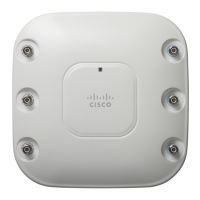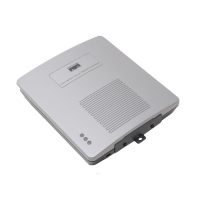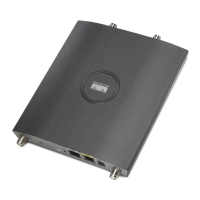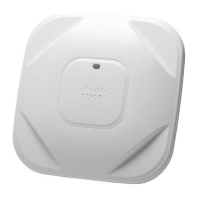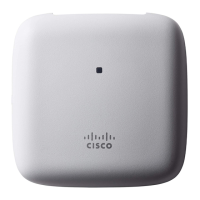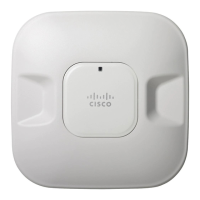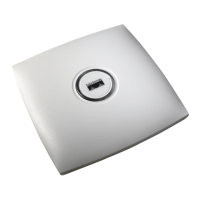9-35
Cisco Aironet 1200 Series Access Point Software Configuration Guide
OL-2159-01
Chapter 9 Diagnostics and Troubleshooting
Tracing Packets
Step 2 To trace packets sent or received through the access point’s Ethernet port, click
Ethernet in the yellow header row. To trace packets sent or received through the
access point’s radio port, click AP Radio in the yellow header row. The Ethernet
Port or AP Radio Port page appears.
Step 3 Click the alert checkbox in the Receive header to trace packets received through
the Ethernet or radio port. Click the alert checkbox in the Transmit header to trace
packets sent through the Ethernet or Radio port.
Note Copying packets into access point memory slows the access point’s performance.
When you finish tracing packets, deselect the alert checkboxes on the Station
pages.
If you want the access point to trace packets all the time, reduce the impact on
performance by selecting Record for the External Information setting on the
Event Handling Setup page and select Port Information on the Event Display
Setup page for the “Severity Level at which to display events immediately on the
console” setting. With this configuration, the access point records packets in a log
file but does not spend time insantly displaying packets on the CLI.
Step 4 Click Refresh. The network interface you are tracing appears in red on the
Summary Status, Setup, and Network Ports pages.
Step 5 Follow the steps in the “Viewing Packet Trace Data” section on page 9-35 to view
the traced packets in a log file or on the CLI.
Viewing Packet Trace Data
If you store traced packets in a log file, you can view or save the file. If you do
not store traced packets, you can view the packets in real time on the access point
CLI.

